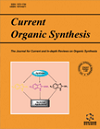
Full text loading...
We use cookies to track usage and preferences.I Understand
Cellulose nanocrystals (CNCs) have triggered considerable research interest in the last few years owing to their unique optical, biodegradation, and mechanical behavior. Herein, recent progress on the sensing application of photonic CNC films is summarized and discussed based on the analyses of the latest studies. We briefly introduce the three approaches for preparing CNCs: mechanical treatment, acid hydrolysis, and enzymatic hydrolysis, recapitulating their differences in preparation and properties. Then, when the aqueous suspension of cellulose nanocrystals (CNCs) reaches a specific concentration, it will self-assemble to form a left-handed nematic liquid crystal structure, and this structure can be maintained in films after water evaporation, which has strong photonic crystal properties. The periodic layered structure in the film interferes and diffracts with light, showing a rainbow color. Photonic CNC composites that combine CNCs and functional materials have good properties and broad prospects. Finally, we highlight the advanced applications of photonic CNC films, including mechanical sensing, thermal sensing, and humidity sensing. The prospects and ongoing challenges of photonic CNC films were summarized.

Article metrics loading...

Full text loading...
References


Data & Media loading...

